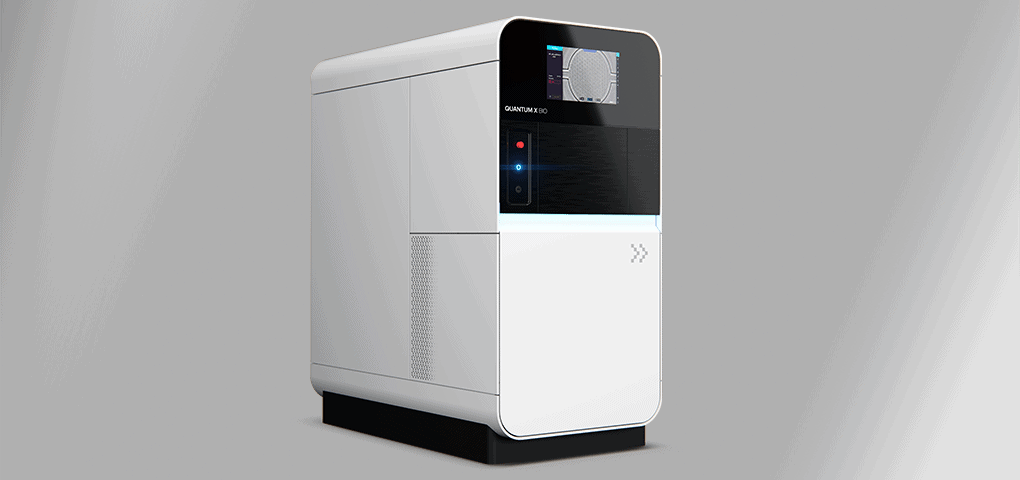Nanoscribe and CELLINK, two BICO companies, today jointly unveiled the Quantum X bio, a revolutionary system as part of the Nanoscribe Quantum X platform providing researchers with the most accurate 3D bioprinter to date. The Quantum X bio is the first-of-its-kind bioprinter enabling submicron printing resolution. Powered by Two-Photon Polymerization (2PP), the Quantum X bio is the premier tool for miniaturizing bioprinting to redefine the development of complex tissue or cell scaffolds and of advanced biomedical applications.
Building off Nanoscribe’s revolutionary Quantum X microfabrication platform, this dedicated bioprinter represents the power of bioconvergence for the full spectrum of biological and biomedical applications. Based on Nanoscribe’s engineering excellence, the proprietary additive manufacturing technology is customized and reimagined in collaboration with the expertise of bioprinting experts at CELLINK. The new Quantum X bio brings essential features like temperature control, sterile environment and functionalized biomaterials. Transferring Nanoscribe’s submicrometer resolution to biofabrication is the key to effectively accelerating innovation across life science applications like tissue engineering, drug delivery, mechanobiology, microfluidics and vascularized tissue.
“Our industry-proven Two-Photon Polymerization technology, combined with CELLINK’s bioprinting expertise, will be a game changer for many challenging biological and biomedical applications, and we look forward to expanding our market leading 3D Microfabrication position in the life sciences with a dedicated bioprinter. The launch of Quantum X bio confirms the power of collaboration within the BICO Group and we are excited to unlock the full potential at the merger of technical and life science disciplines” says Martin Hermatschweiler, CEO and co-founder of Nanoscribe.
“Co-developing products like this is the exact reason why we take such pride in being a part of the BICO Group” says Cecilia Edebo, CEO of CELLINK. “We look forward to delivering this system to our customers and witnessing the marvelous breakthroughs they will achieve.”
Bioprinting with submicron precision to revolutionize the future of health
The Quantum X bio provides researchers the ability to adjust print resolution to fit their designs, allowing them to control finest details down to 100 nanometer precision. Thanks to the bioprinter’s unmatched precision in combination with tremendous speed, it is the optimal tool for the fabrication of advanced microenvironments for tissue engineering, custom scaffolds for cell studies, and many other innovative biological applications.
The new Quantum X bio will also be driving live cell printing. Live cell printing means printing with living cells in the resin, which is a major challenge because cells are typically under stress while being processed and residing inside the printer. Quantum X bio is equipped with live cell printing features such as sterile, temperature-controlled environment and a cell-friendly wavelength of the laser (780 nm).
Moreover, the versatile tool covers biomedical applications like customized microfluidic elements and microneedle arrays or microrobots for drug delivery. Connecting the micro to the macro world, 3D structures can be placed intuitively and with highest precision into microfluidic channels or wells by simply tapping on the machine’s touchscreen.
The power of bioconvergence for driving tissue engineering and biomedicine
The design freedom of Nanoscribe’s 3D printing technology is an important asset and accelerates design iteration cycles. With the easy-to-learn user interface and straightforward workflow, successful printing results are achieved even faster. Customers can choose of a wide range of biomaterials, bioresins, and biocompatible materials to suit their application. Combined with sterile consumables provided by e.g. BICO Group members MatTek and Advanced BioMatrix, everything is available that research labs, life science and pharmaceutical companies need to revolutionize tomorrow’s tissues engineering, cell cultivation and biomedical applications through the power of bioconvergence.


